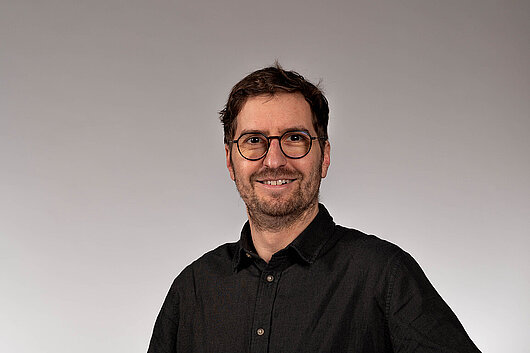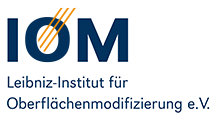
Head of "Modelling and Simulation"
Leibniz Institute of Surface Engineering (IOM)
Permoserstr. 15 / 04318 Leipzig / Germany
+49 (0)341 235-2727
martin.rudolph(a)iom-leipzig.de
Fields of Expertise
I am a plasma physicist dedicated to understanding the fundamental mechanisms that drive plasma processes. My work combines experimental diagnostics – particularly imaging and emission spectroscopy – with model development to interpret observations. I focus on computationally efficient process models that can effectively explore the vast parameter space of plasma discharges. Machine learning plays a key role in my research, aiding in the prediction of experimental outcomes, optimization of plasma processes, and analysis of input parameter dependencies. Applications are high-power impulse magnetron sputtering (HiPIMS) at low pressures for thin-film deposition, and atmospheric-pressure plasmas for converting organic layers into solid functional oxides.
Scientific Career
Since 2023, I have been co-leading the cross-sectional unit "Modeling and Simulation" at the Leibniz Institute of Surface Engineering (IOM). My research journey started in France, where I earned my Ph.D. in 2017 at the Laboratoire de Physique des Gaz et des Plasmas (LPGP) at Université Paris-Saclay. Previously, I obtained an M.Sc. in Space Science and Technology from Luleå University of Technology in Sweden and a Master in Physics and Astrophysics from Université Paul Sabatier in Toulouse.
Selected Publications
- M. Rudolph, W. Diyatmika, O. Rattunde, E. Schuengel, D. Kalanov, J. Patscheider, A. Anders
Generating spokes in direct current magnetron sputtering discharges by an azimuthal strong-to-weak magnetic field strength transition
Plasma Sources Sci. Technol. 33, 045002, 2024
https://doi.org/10.1088/1361-6595/ad34f7 - M. Rudolph, P. Birtel, T. Arnold, A. Prager, S. Naumov, U. Helmstedt, A. Anders, P. C. With
Low-temperature atmospheric pressure plasma conversion of polydimethylsiloxane and polysilazane precursor layers to oxide thin films
Plasma Process. Polym., e2200229, 2023
https://doi.org/10.1002/ppap.202200229 - M. Rudolph, N. Brenning, H. Hajihoseini, M. A. Raadu, T. M. Minea, A. Anders, J. T. Gudmundsson, D. Lundin
lnfluence of the magnetic field on the discharge physics of a high power im pulse magnetron sputtering discharge
J. Phys. D: Appl. Phys. 55, 015202, 2022
https://doi.org/10.1088/1361-6463/ac2968 - M. Rudolph, N. Brenning, H. Hajihoseini, M. A. Raadu, J. Fischer, J. T. Gudmundsson, D. Lundin
Operating modes and target erosion in high power impulse magnetron sputtering
J. Vac. Sci. Technol. A 40, 043005, 2022
https://doi.org/10.1116/6.0001919 - M. Rudolph, D. Kalanov, W. Diyatmika, A. Anders
Electron transport in high power impulse magnetron sputtering at low and high working gas pressure
J. Appl. Phys. 130, 243301, 2021
https://doi.org/10.1063/5.0075744 - M. Rudolph, A. Revel, D. Lundin, H. Hajihoseini, N. Brenning, M. A. Raadu, A. Anders, T. M. Minea, J. T. Gudmundsson
On the electron energy distribution function in the high power impulse magnetron sputtering discharge Plasma Soures
Plasma Sources Sci. Technol. 30, 045011, 2021
DOI 10.1088/1361-6595/abefa8 - M. Rudolph, I. Vickridge, E. Foy, J. Alvarez, J.-P. Kleider, D. Stanescu, H. Magnan, N. Herlin-Boime, B. Bouchet-Fabre, T. Minea, M.-C. Hugon
Oxygen incorporated during deposition determines the crystallinity of magnetron-sputtered Ta3NS films
Thin Solid Films 685, 204-209, 2019
https://doi.org/10.1016/j.tsf.2019.06.031
Memberships
- German Physical Society (Deutsche Physikalische Gesellschaft - DPG): https://www.dpg-physik.de
- German Society of Plasma Technology (Deutsche Gesellschaft für Plasmatechnologie - DGPT): https://www.dgpt.eu/
- DSC Arminia Bielefeld (ASC): https://www.arminia.de
